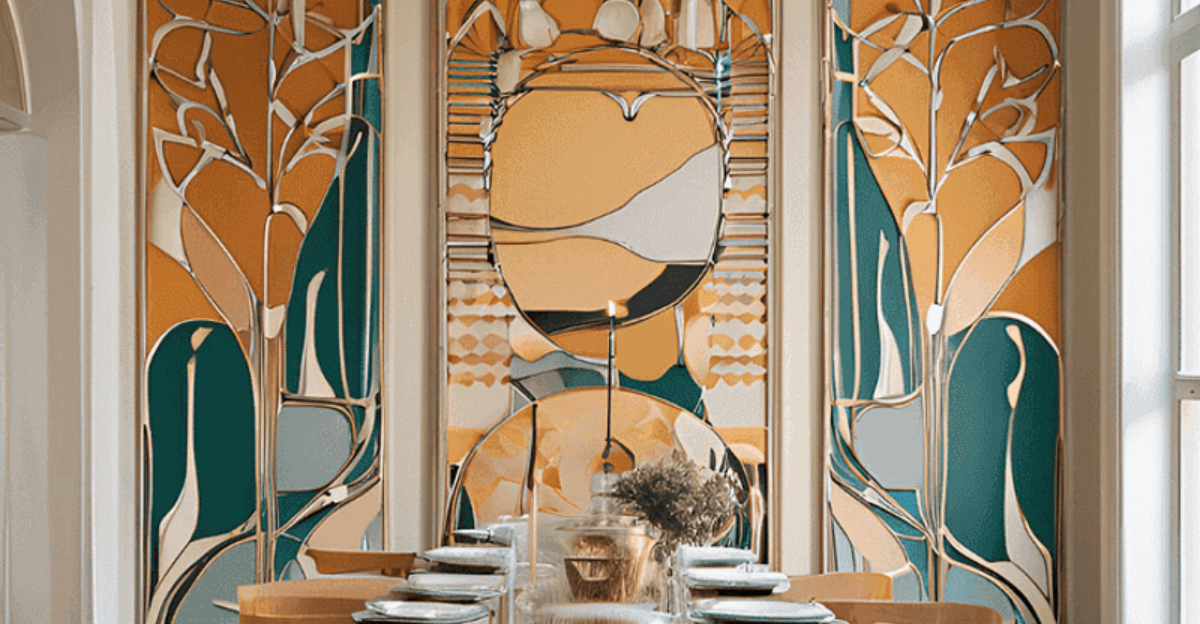Art Nouveau and Art Deco stand as two of history’s most captivating design movements, yet they couldn’t be more different from each other.
One embraces nature’s flowing curves while the other celebrates machine-age precision and geometry. When these styles collide in modern spaces, the result is a visual feast that breaks all the rules while somehow working brilliantly.
1. Curves vs. Straight Lines
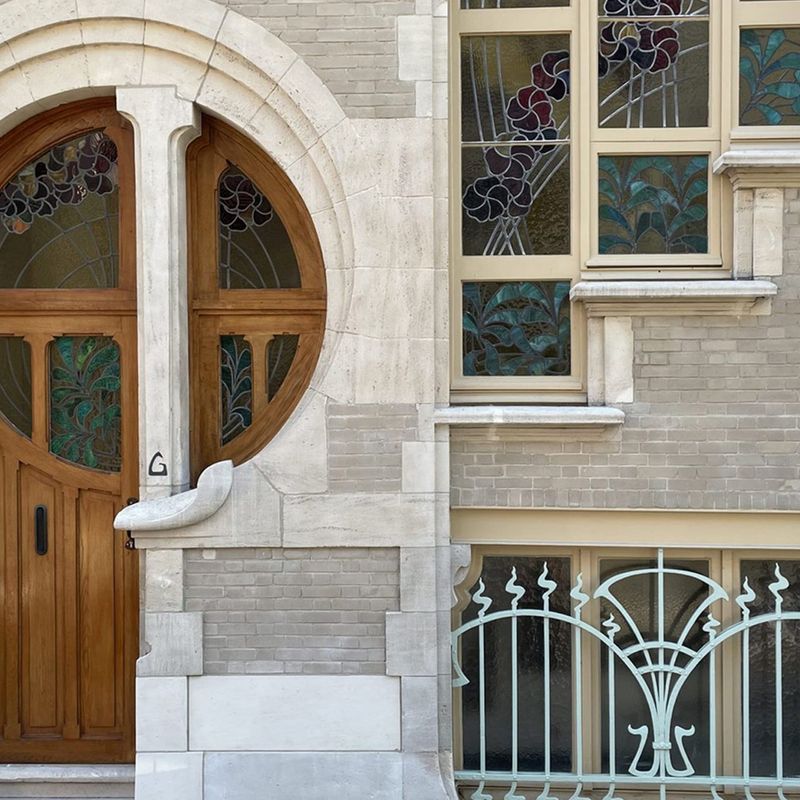
Art Nouveau swoops and swirls like a dancer caught mid-twirl, with lines that seem to have a life of their own. Every element flows organically, as if drawn with a paintbrush dipped in honey.
Meanwhile, Art Deco slices through space with razor-sharp precision and perfect geometry. The contrast creates a visual tension that’s electric – like watching ballet performed on a chessboard.
2. Nature vs. Machine
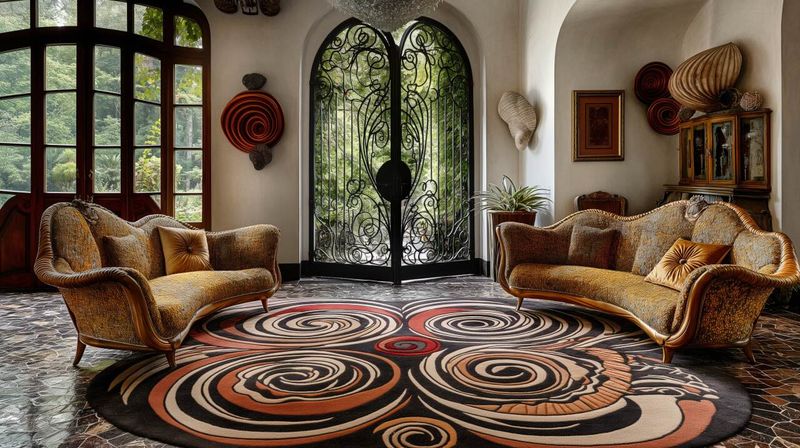
Flowering vines, dragonflies, and woodland nymphs populate the Art Nouveau universe. Every piece tells a story where humans and nature intertwine in mystical harmony.
Art Deco? It’s all about the machine age – streamlined forms, industrial materials, and the promise of a technological future. Picture a delicate orchid blooming next to a chrome-plated rocket ship.
3. Handcrafted vs. Mass-Produced
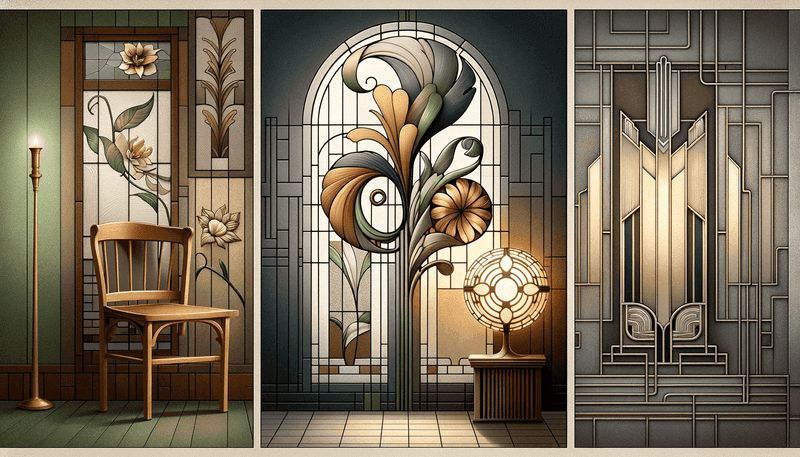
Art Nouveau celebrates the artisan’s touch – each piece unique with visible hammer marks, brush strokes, and the charming imperfections of handcraft. These works whisper stories of the hands that made them.
Art Deco embraces industrial precision and the sleek possibilities of mass production. The contrast is like comparing a handwritten love letter to a perfectly typeset magazine – both beautiful for entirely different reasons.
4. Whimsy vs. Sophistication
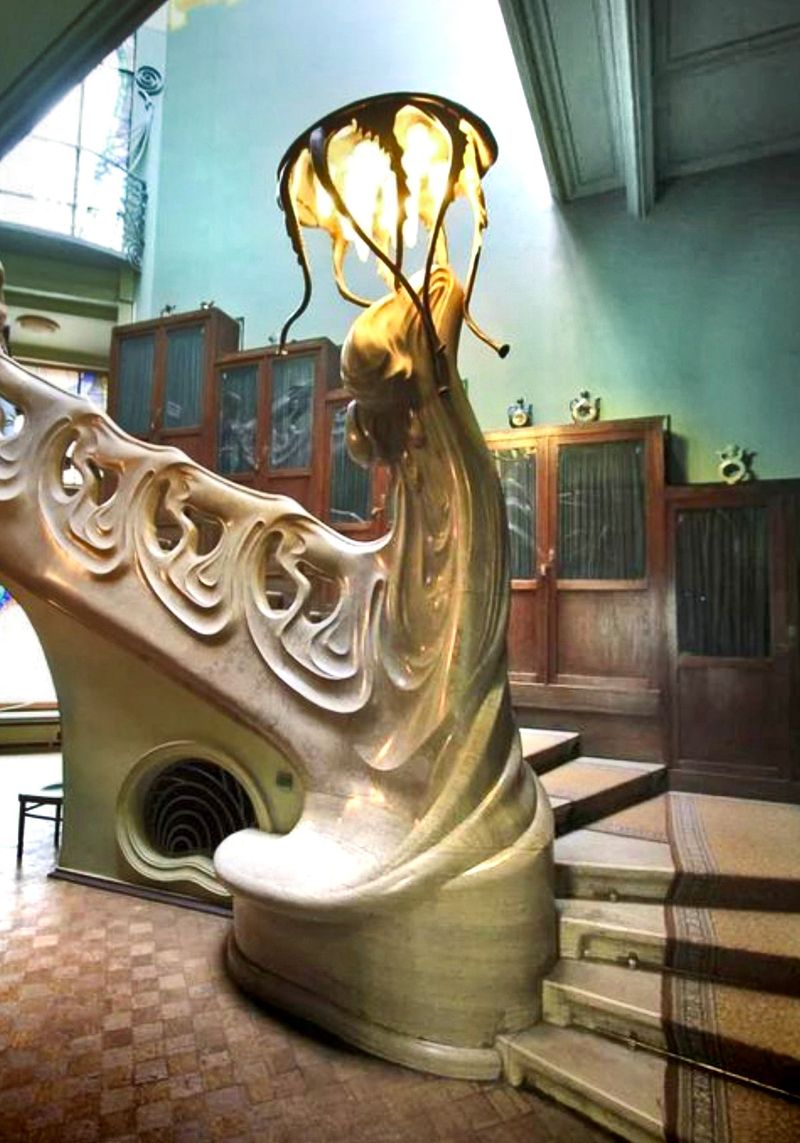
Art Nouveau winks at you with playful, sometimes eccentric forms that seem plucked from a fairy tale. There’s something eternally youthful about its unbridled imagination and dreamy quality.
Art Deco raises an eyebrow, cocktail in hand, exuding urbane sophistication. It’s like comparing your free-spirited bohemian aunt to your glamorous city-dwelling cousin who always knows which fork to use.
5. Muted Palette vs. Bold Colors
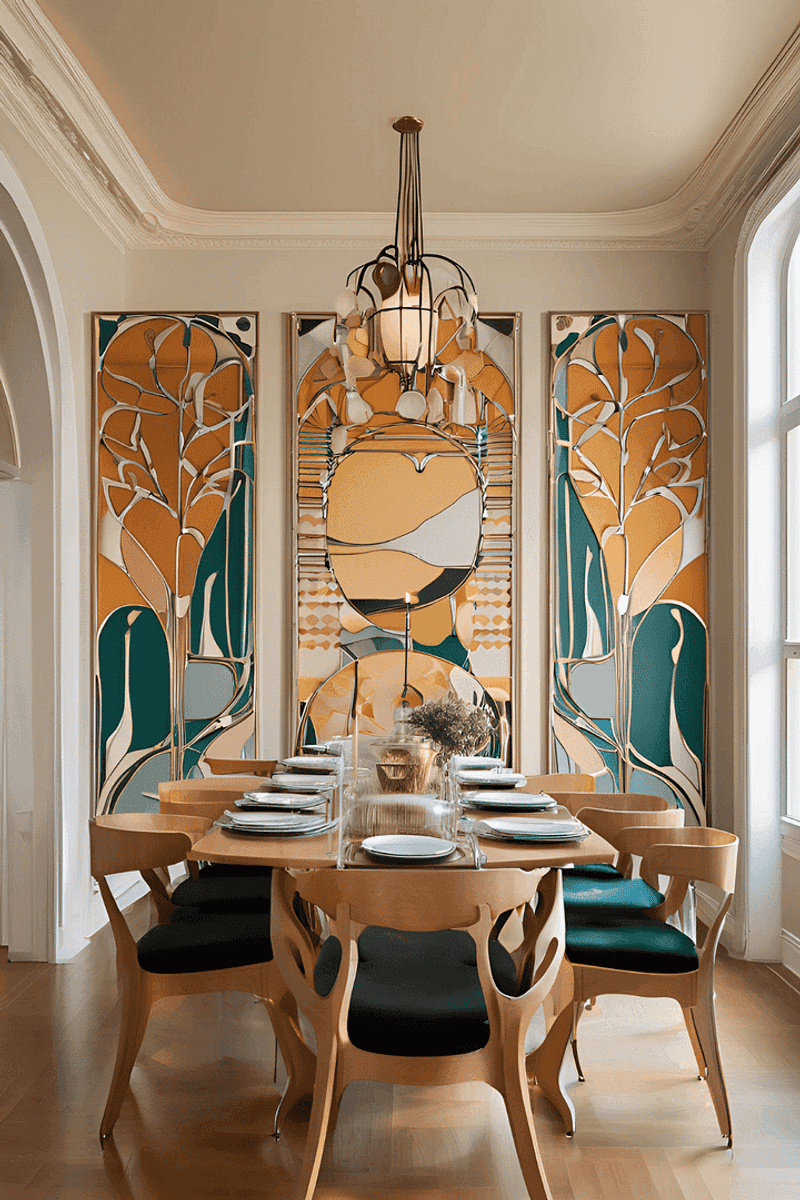
Mossy greens, misty purples, and amber golds define Art Nouveau’s dreamy palette. Colors seem filtered through stained glass or forest canopy, creating a mystical atmosphere.
Art Deco bursts forth with bold blacks, electric blues, fiery oranges, and metallic golds. The color difference feels like comparing a misty morning in an enchanted forest to the neon-lit excitement of a jazz club at midnight.
6. Asymmetry vs. Perfect Balance
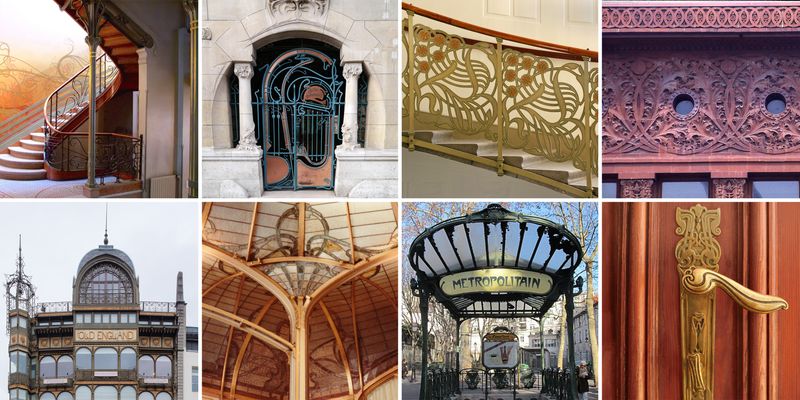
Art Nouveau delights in asymmetrical compositions that keep your eye wandering along unpredictable paths. Like nature itself, balance exists but never in perfect mirror images.
Art Deco demands mathematical precision and perfect symmetry. When these approaches collide in one space, you get the visual equivalent of jazz improvisation played over a metronome beat – chaotic yet somehow perfectly harmonious.
7. Mystical vs. Rational
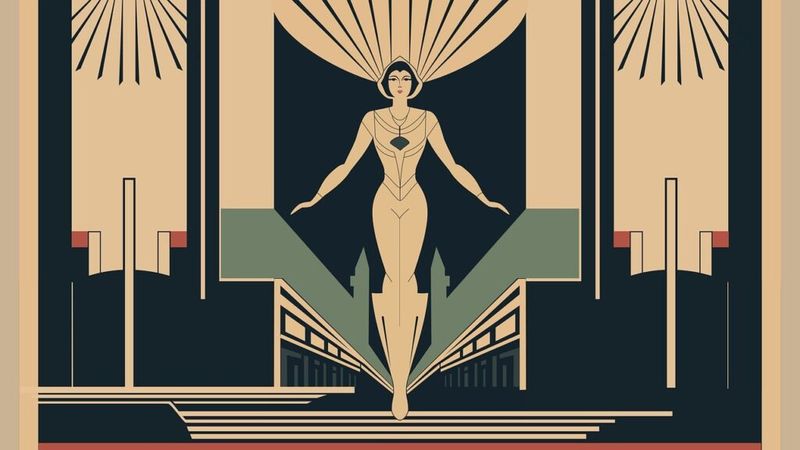
Art Nouveau flirts with the supernatural – mythical creatures, psychedelic plant forms, and dreamlike women with flowing hair that turns into water. There’s something almost hallucinatory about its approach to reality.
Art Deco stands firmly in the rational world of science and progress. The clash feels like watching a fortune teller set up shop in a laboratory – the mystical and logical creating an irresistible tension.
8. Crafted Details vs. Sleek Minimalism
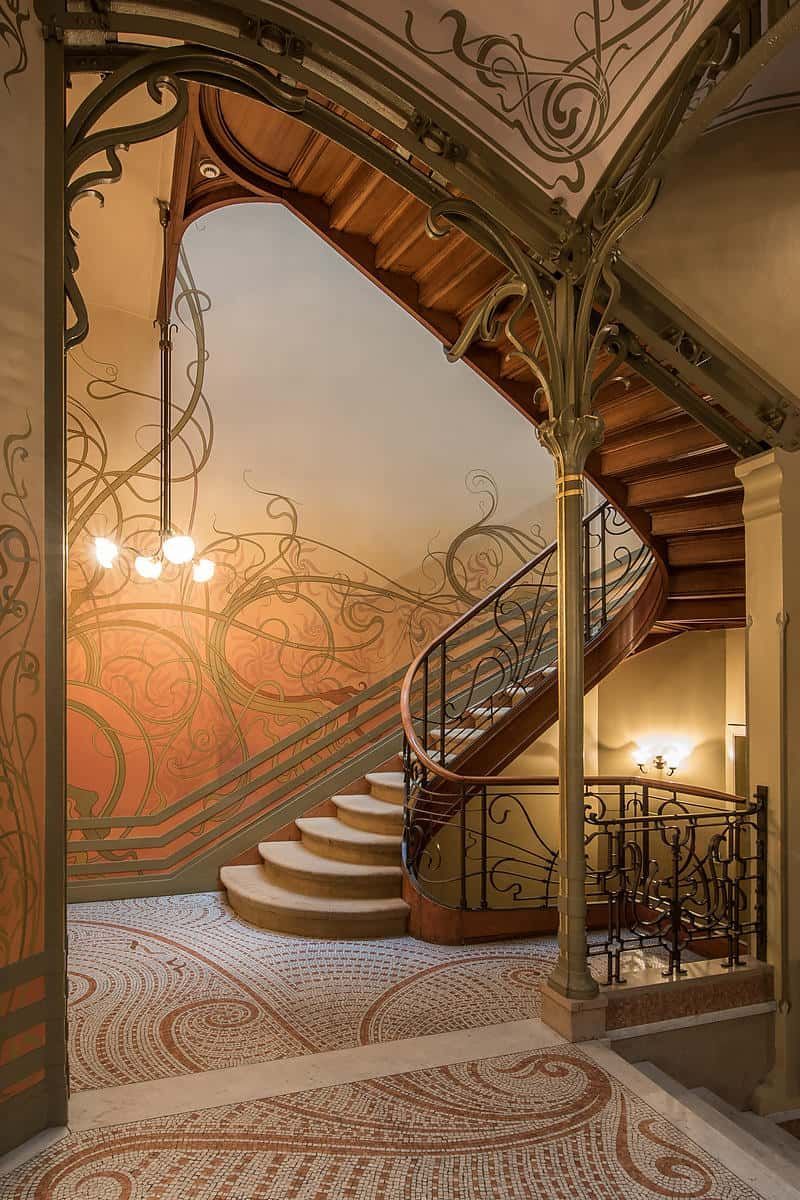
Every inch of an Art Nouveau piece invites closer inspection – tiny carved details, hidden faces in woodwork, insects perched on flower petals. The craftsperson seems determined to reward the attentive viewer.
Art Deco embraces the power of clean, unadorned surfaces and the beauty of negative space. Together, they’re like an ornate Victorian diary sitting on a minimalist coffee table – the contrast making each more striking.
9. Feminine vs. Masculine Energy
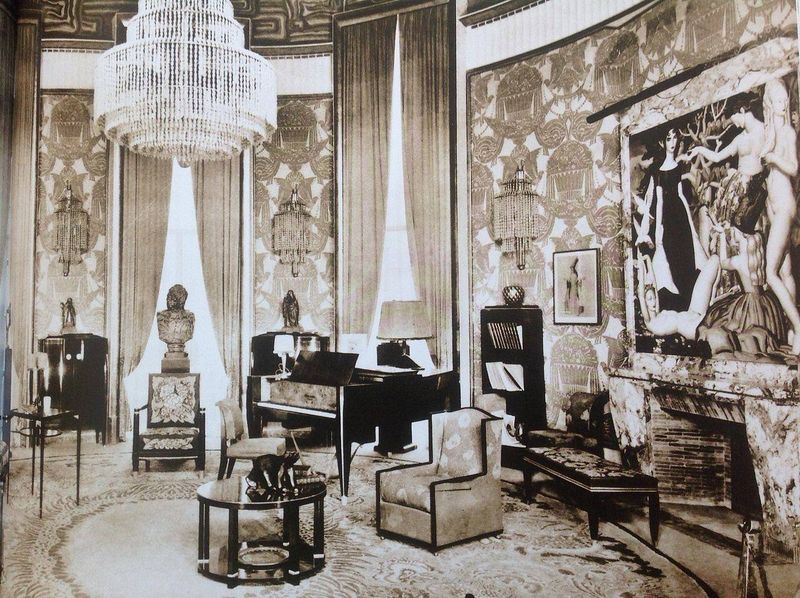
Art Nouveau pulses with traditionally feminine energy – curves, flowers, and a certain delicate sensuality that flows through its forms. Even its typography seems to sway like a woman’s hips.
Art Deco projects masculine boldness with strong verticals, hard edges, and a certain muscular quality to its designs. When paired, they create a perfect yin-yang balance – like Fred Astaire and Ginger Rogers dancing across a room.
10. Transparent vs. Opaque

Art Nouveau loves to play with translucency – stained glass, thin porcelain, and materials that filter light rather than block it. There’s a certain ethereal quality, like looking at the world through gossamer wings.
Art Deco prefers solid statements – opaque materials, bold shadows, and definitive boundaries. Together they create spaces where light dances between substance and shadow, like sunshine filtering through forest leaves onto marble floors.
11. Escapist vs. Futurist
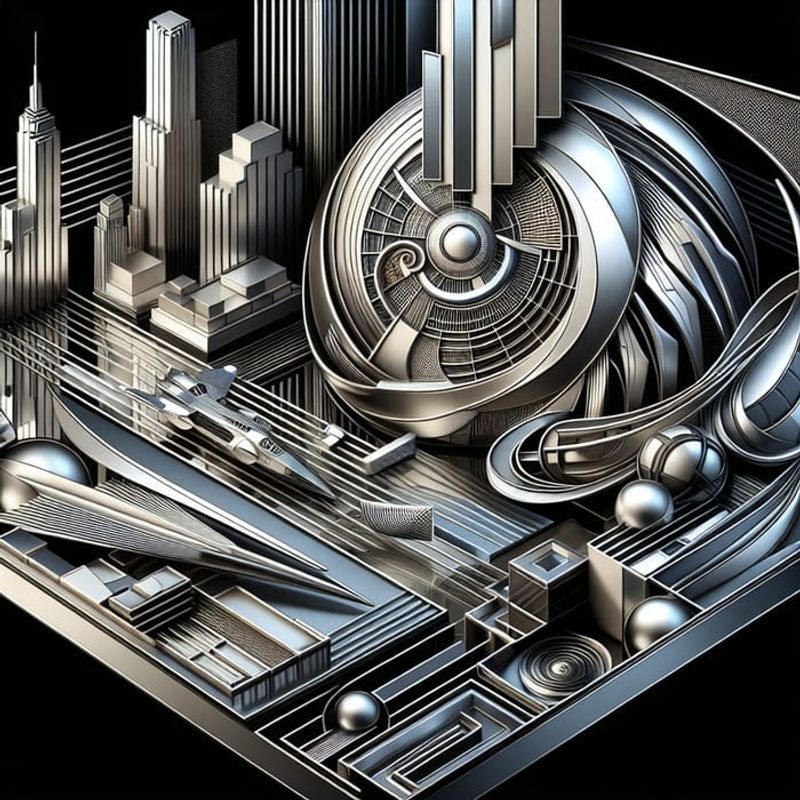
Art Nouveau offers escape into a dreamy past that never quite existed – a romanticized natural world where modernity hasn’t intruded. It’s nostalgic for something we never actually had.
Art Deco rushes headlong into a gleaming future of speed, technology, and urban sophistication. The contrast feels like finding a Victorian fairy tale book in the cabin of a rocket ship – past dreams meeting future ambitions.
12. Organic Textures vs. Polished Surfaces
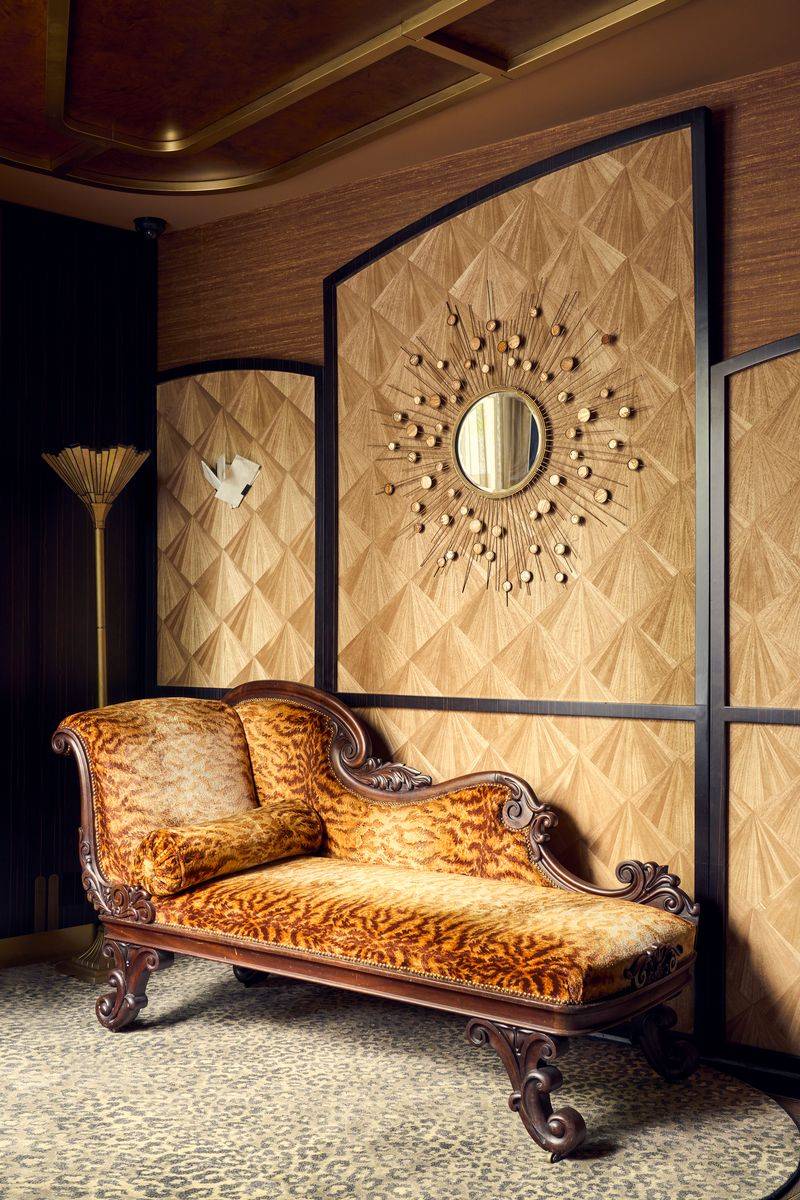
Art Nouveau celebrates textural variety – rough-hewn wood, hammered metal, and surfaces that beg to be touched. Every piece carries the tactile memory of its creation process.
Art Deco glorifies the smooth and polished – lacquered surfaces, mirrored glass, and materials buffed to perfection. Combining them creates spaces with sensory richness, like wearing silk pajamas while sitting on a moss-covered log.
13. Intimate vs. Grand Scale
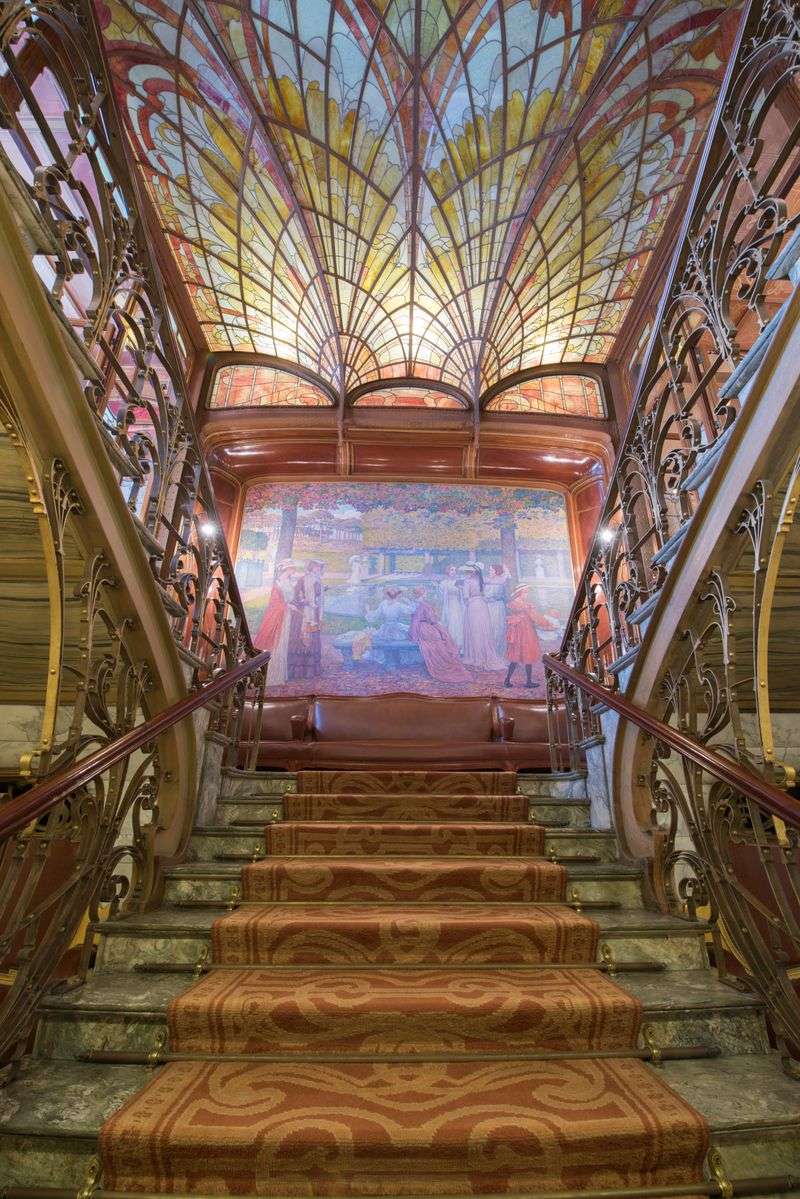
Art Nouveau thrives in intimate spaces – cozy nooks, personal objects, and human-scaled environments. Its forms wrap around you like a lover’s embrace, creating cocoons of comfort.
Art Deco demands grand gestures – soaring lobbies, sweeping staircases, and monumental proportions. When these scale approaches meet, it’s like a whispered secret told in a magnificent theater – the personal made dramatic by its setting.
14. Fluid vs. Structured Typography
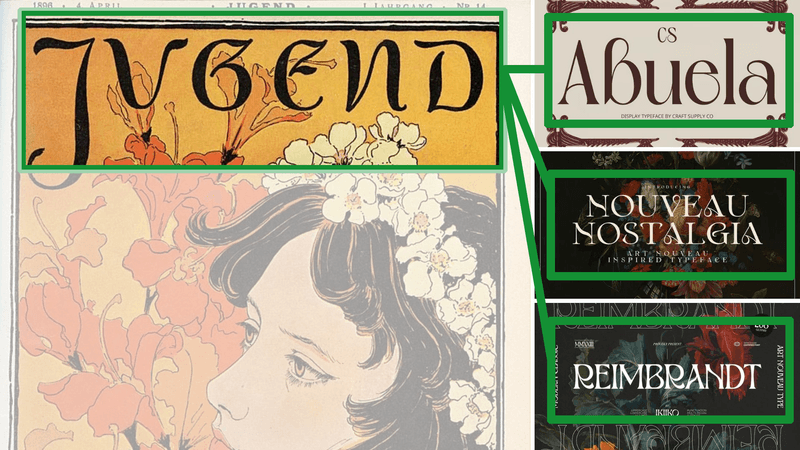
Art Nouveau letters dance across the page with fluid, organic forms that mimic vines and tendrils. Each character seems alive, growing before your eyes into unexpected flourishes.
Art Deco typography stands at attention – geometric, precise, and often dramatically vertical. Seeing them together on a modern poster is like watching ballet performed to military marching music – disciplined freedom creating unexpected harmony.
15. Individual vs. Universal
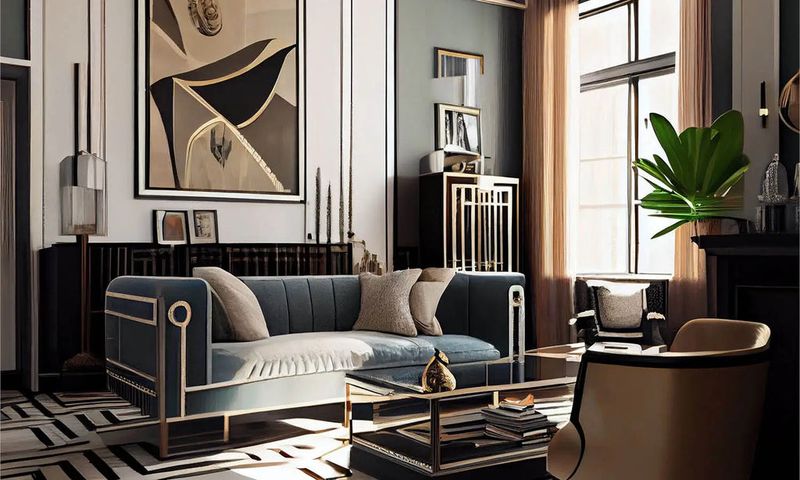
Art Nouveau celebrates the individual creator’s vision – each piece bearing the unmistakable mark of its maker. No two works are ever quite the same, each reflecting a personal artistic journey.
Art Deco strives for universal appeal through perfect proportions and mathematical harmony. When these philosophies merge in contemporary design, they create spaces that feel both personally meaningful and universally appealing – like a custom-tailored version of a classic suit.
16. Local Materials vs. Exotic Imports
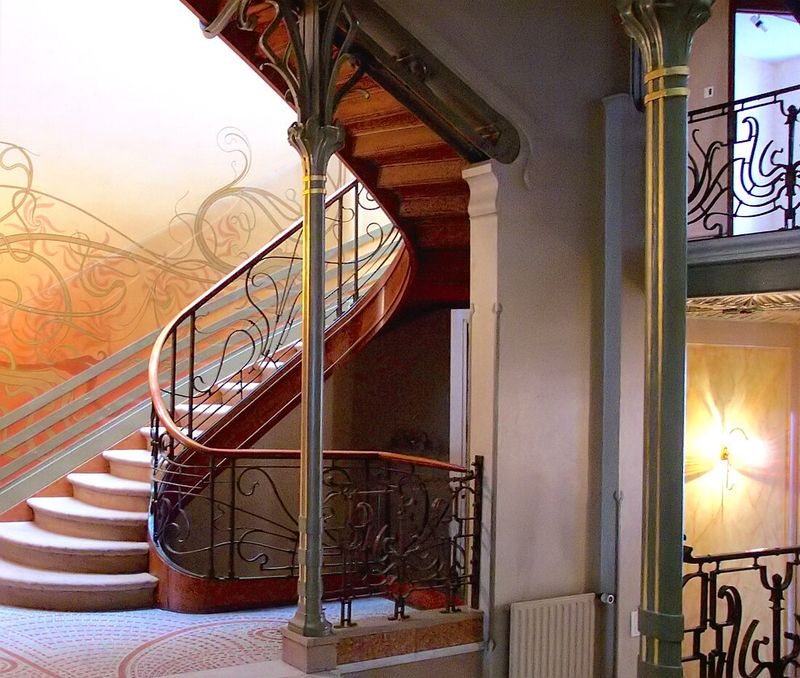
Art Nouveau often celebrates local materials – native woods, regional stones, and traditional crafts reinterpreted for the modern age. Each piece tells the story of its place of origin.
Art Deco flaunts exotic materials from far-flung corners of the empire – zebra wood, shagreen, ivory, and metals from distant mines. The contrast creates spaces that feel both rooted and worldly, like a farm-to-table meal served on exotic imported china.
17. Spiritual vs. Material
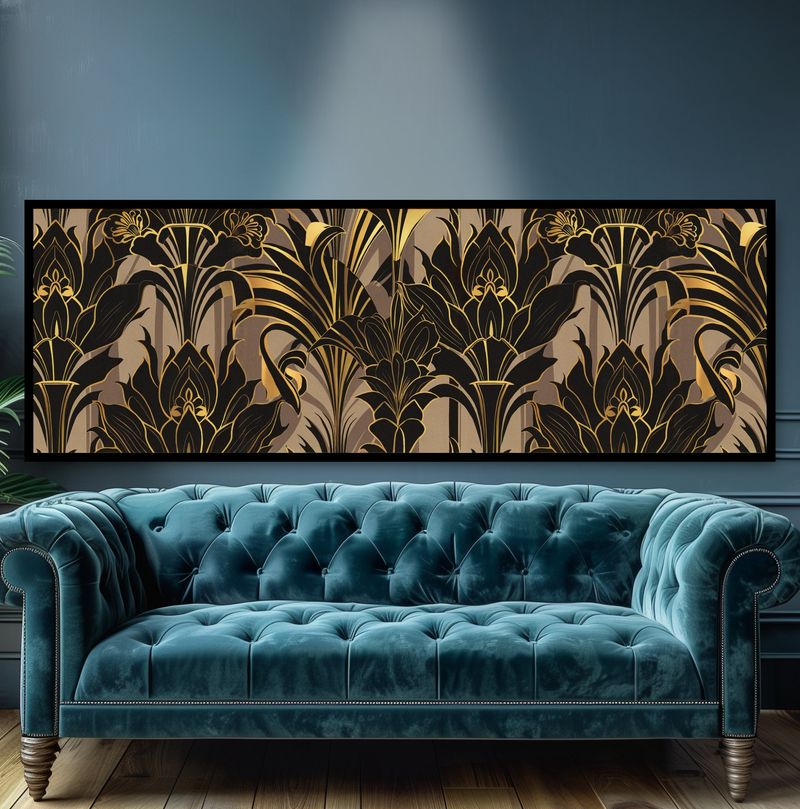
Art Nouveau pulses with spiritual undertones – connections to nature worship, mysticism, and the unseen forces of the universe. Its forms often reference religious or spiritual motifs reimagined for secular spaces.
Art Deco celebrates material prosperity and worldly pleasures without apology. Together they create a fascinating dialogue between higher aspirations and earthly delights – like a meditation room with a fully stocked bar cart in the corner.
18. Bespoke vs. Standardized
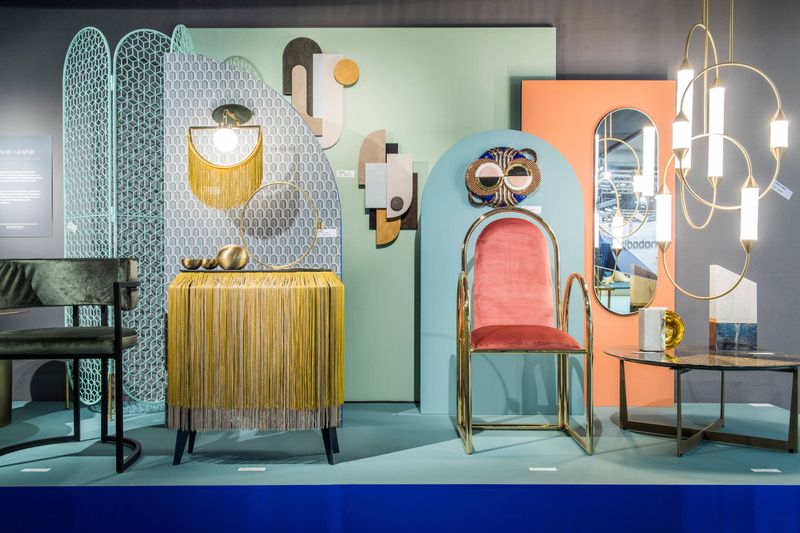
Art Nouveau insists on the bespoke – custom-fitted to specific spaces and individuals. No element is ever quite repeatable, as each responds to unique conditions and requirements.
Art Deco embraces standardization and modular thinking, with elements that can be repeated and combined in endless variations. The contrast offers both the comfort of personalization and the reliability of proven patterns – like custom alterations on a perfectly designed classic dress.

